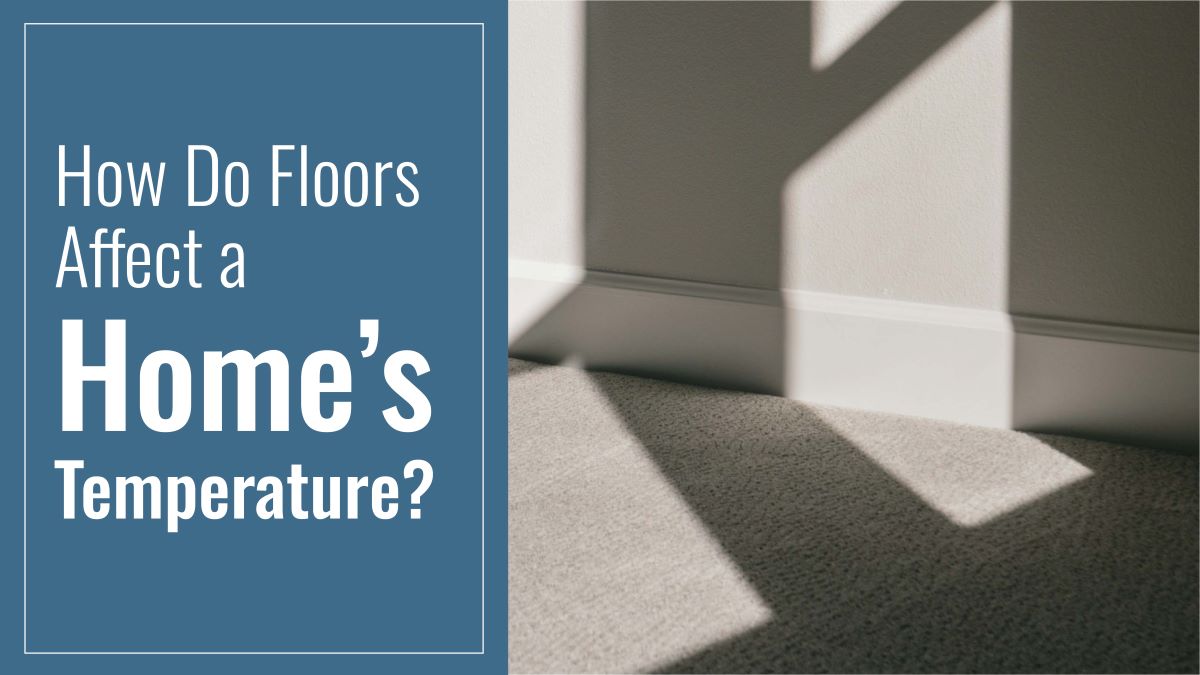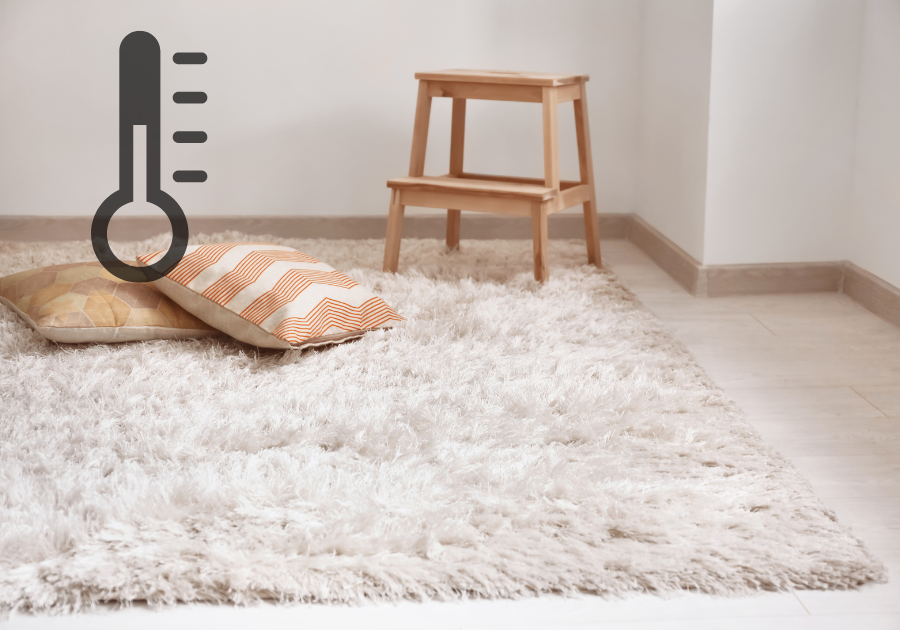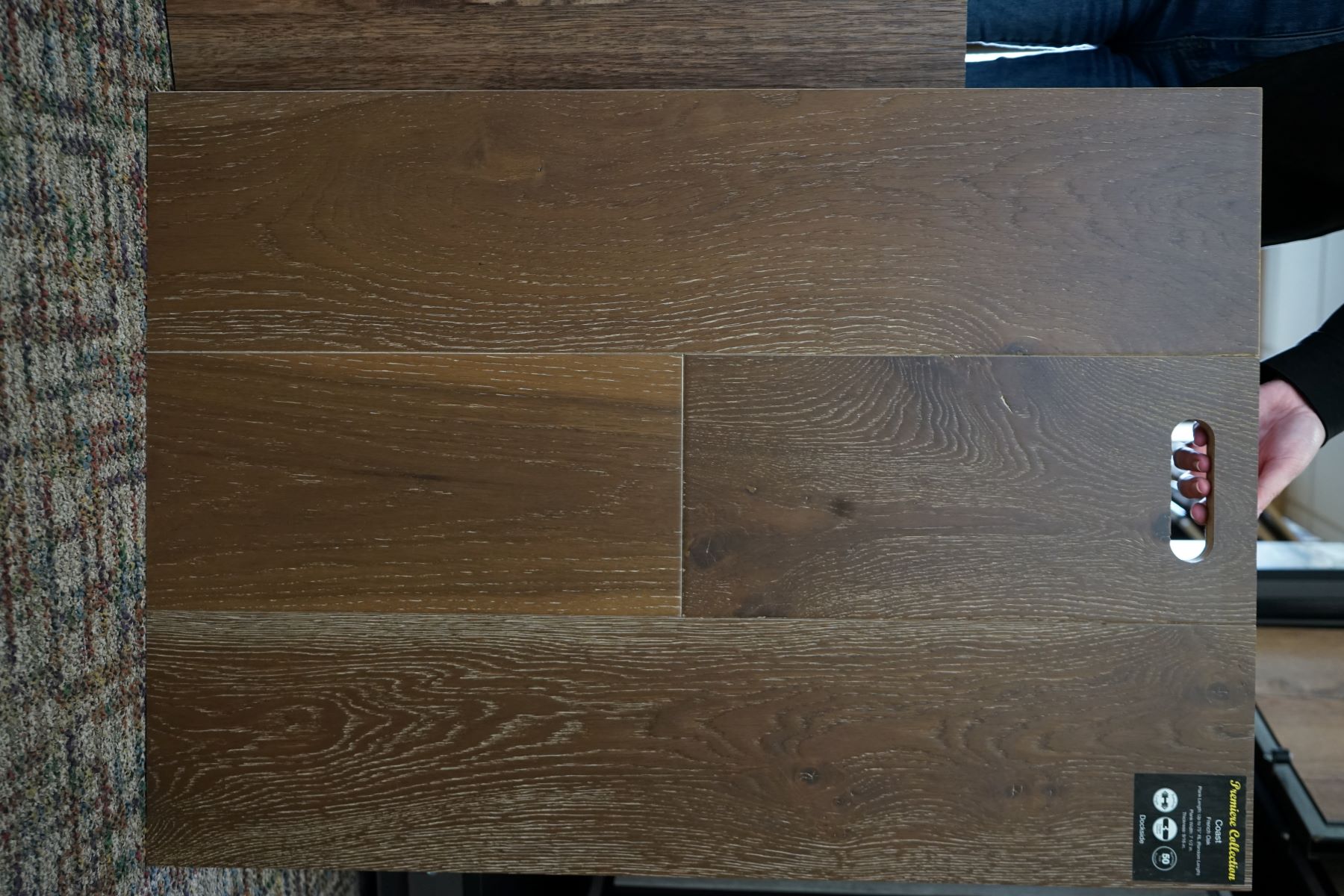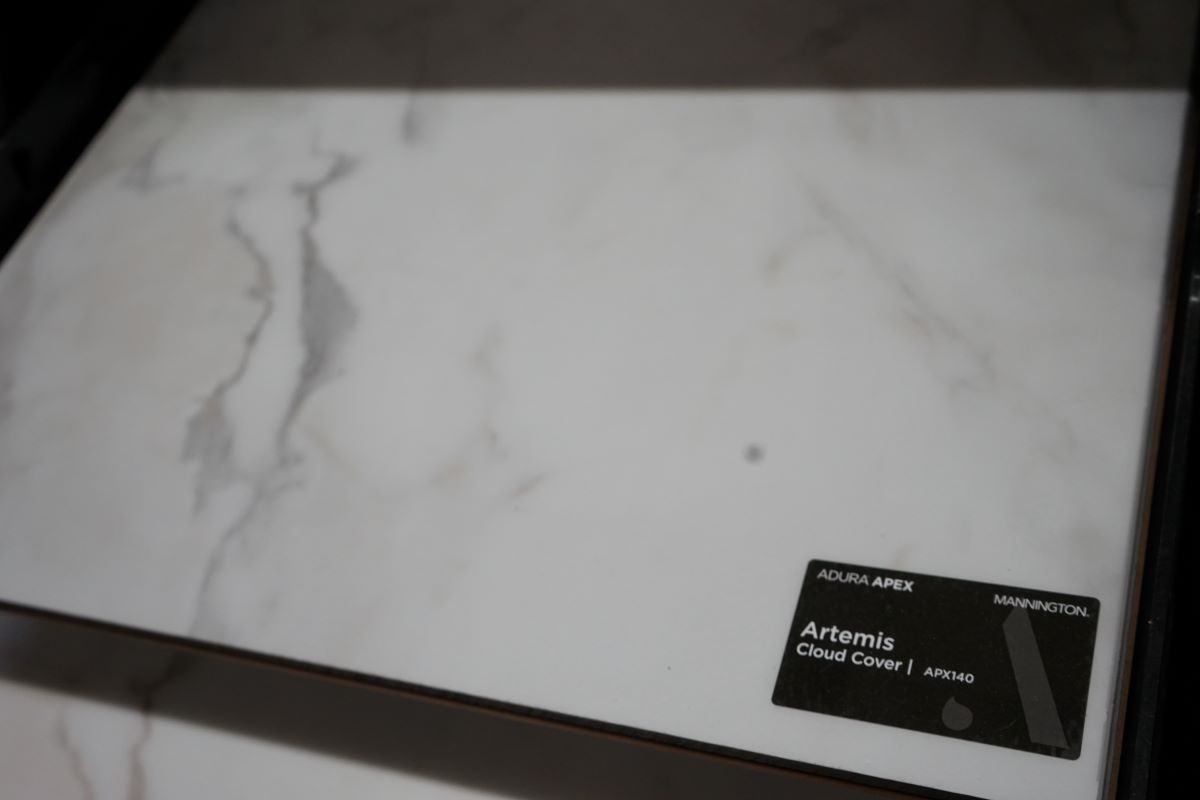How Do Floors Affect My Home's Temperature?
How Do Floors Affect My Home's Temperature?

When searching for new floors for your home, you have many different options to consider. From hardwood to laminate, each flooring option offers its own unique advantages. Determining the right choice for you is about identifying your priorities and then finding a corresponding flooring choice that fits your needs.
One often overlooked feature of flooring that buyers often fail to see is how flooring affects interior temperature. Internal temperature is often determined by how much sunlight enters the home and how that light is reflected when it enters. Flooring plays a monumental role in determining how heat and light are distributed throughout your home.
In this post, we will discuss how your home's floors affect your interior temperature. We will talk about different kinds of flooring including carpet, hardwood, tile, and laminate. Keep reading to learn more about the relationship between flooring type and interior temperature.

Do Floors Affect a Home’s Temperature?
There is a clear correlation between the type of floor in a given room and its internal temperature.
Below we have detailed a few flooring options and how they affect interior temperature.
Carpet
Carpet is an excellent choice for enhancing insulation in any room. Its thick fibers create a barrier that traps heat, making spaces feel warmer during colder months. This natural insulation capability can significantly lower heating costs, as less energy is required to maintain comfortable temperatures.
In addition to energy efficiency, carpets also provide a cozy environment. They feel warm underfoot, which enhances the overall perception of warmth in a room. This tactile comfort can transform a space, making it inviting and relaxing. Whether in living rooms, bedrooms, or halls, carpets contribute to a homey atmosphere that hard flooring simply cannot match.
Where should I install carpet? Carpet is best for rooms that do not get a lot of sunlight, cold or drafty rooms, or any room that needs a cozy enhancement.

Hardwood
Hardwood floors offer moderate thermal conductivity, meaning they do not retain heat as effectively as materials like carpet, but they still provide a level of insulation. This property allows hardwood to contribute to a comfortable indoor environment by helping to maintain a stable temperature within a room. However, during colder months, hardwood can feel cool underfoot, which may be a drawback for some.
Despite this cooler sensation, hardwood’s stability in temperature makes it a practical choice for various climates. It can adapt to fluctuations in room temperature, ensuring a consistent experience throughout the year. Additionally, hardwood’s elegant appearance and durability can enhance the aesthetic of any space while providing a functional flooring option.
Where should I install hardwood? Because it is a moderate conductor of heat, hardwood can go in almost any space. Look for spaces that, in terms of light exposure, are a happy medium. Consider hardwood for rooms with medium-sized windows that require comfort like kitchens or living rooms.

Tile
Tile is a popular flooring option known for its high thermal conductivity. This property allows tile to quickly absorb and transfer heat, leading to a unique sensation: it feels cold during winter months and pleasantly cool in summer. While this characteristic can be refreshing in hot weather, it can also be uncomfortable in colder seasons, making footwear essential for warmth.
However, tile's inability to retain heat diminishes its effectiveness as an insulator. Unlike carpet or wood, which can trap warmth, tile allows heat to escape quickly, resulting in cooler room temperatures. This means that while tile can help maintain a cooler environment in hotter climates, it may require additional heating sources during the winter to achieve cozy indoor conditions.
Where should I install tile? Tile can be fickle and often presents the most extreme of temperatures. Choose rooms without too much light exposure but above ground level. You will often find tile in bathrooms and kitchens, but almost never in basements.
.jpg)
Laminate
Laminate flooring serves as an attractive option for homeowners seeking a balance between aesthetic appeal and functionality. While it offers some insulation, it cannot compete with the warmth provided by carpet. The insulating properties of laminate largely depend on the quality and thickness of the material; thicker and higher-quality laminates tend to have better heat retention.
In terms of thermal stability, laminate flooring strikes a good balance. It provides a neutral underfoot experience, often feeling warm compared to tile but cool compared to carpet. This quality makes laminate suitable for various seasons, as it can adapt to room temperature fluctuations without feeling uncomfortable.
Where should I install laminate? Laminate is another versatile option, perfect for covering ground when carpet is a touch too warm and hardwood a touch too cold. Consider it a good fit for kitchens, hallways, and even bedrooms.
The Perfect Flooring for Your Interior Temperature Needs
The flooring you choose for your home plays an important role in influencing the interior temperature of your home. While style is an important factor to consider, don't sacrifice your comfort just for an aesthetic, especially if that aesthetic turns your living room into a boiler room.
If you are looking for flooring that is a perfect fit for your interior temperature needs, the flooring professionals at A Step Above Flooring are here for you. We will work with you to establish your needs and discover a flooring option that fits your budget, stylistic goals, and helps your home maintain a comfortable temperature.
Click here to reach out to our team today!
If you are looking for more flooring tips that will help you find your next great hardwood floors, follow A Step Above Flooring on Facebook, Pinterest, and LinkedIn.
Happy with the A Step Above Flooring difference? Leave us a five-star review on Google here!
